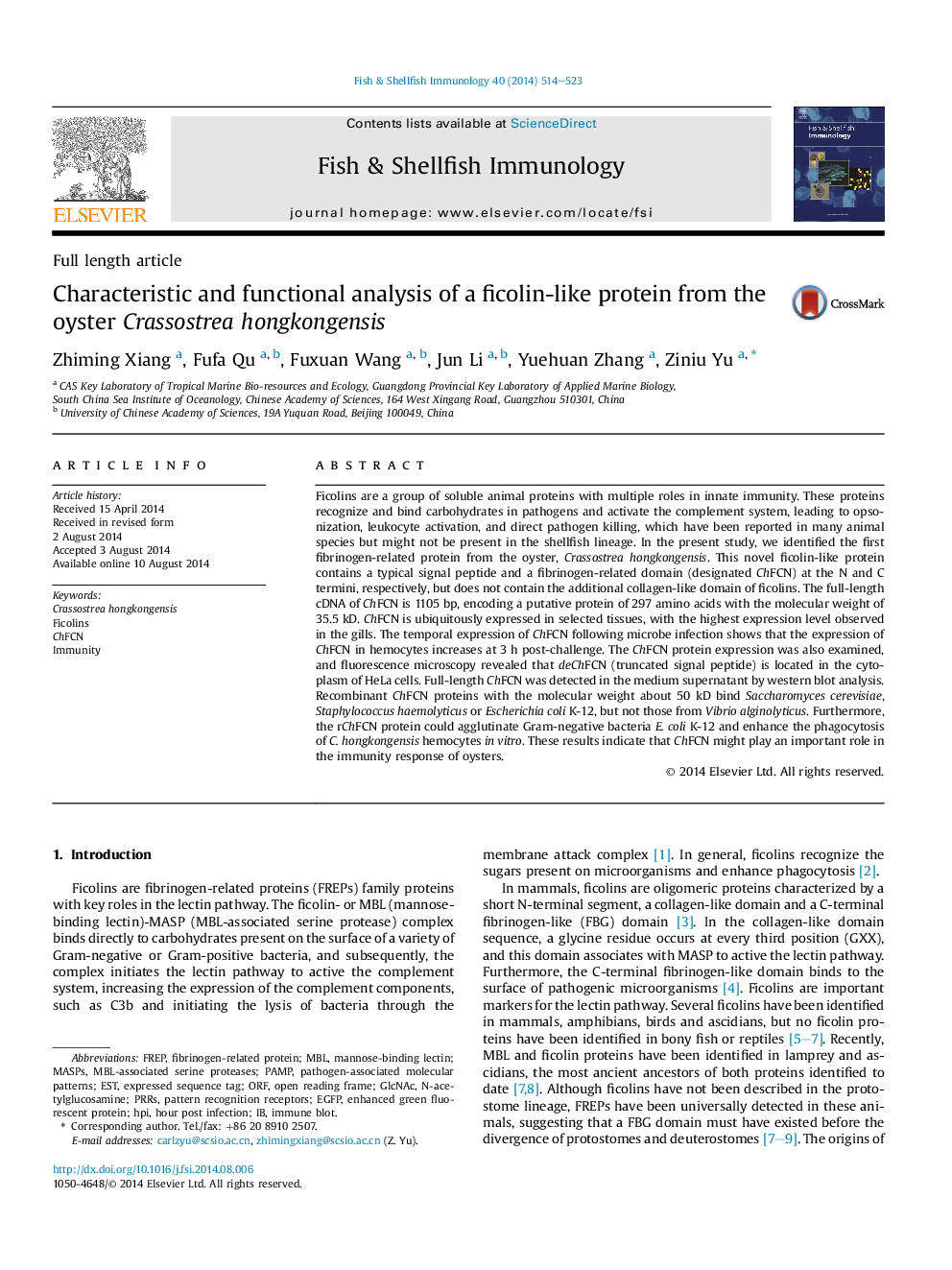| Article ID | Journal | Published Year | Pages | File Type |
|---|---|---|---|---|
| 8499572 | Fish & Shellfish Immunology | 2014 | 10 Pages |
Abstract
Ficolins are a group of soluble animal proteins with multiple roles in innate immunity. These proteins recognize and bind carbohydrates in pathogens and activate the complement system, leading to opsonization, leukocyte activation, and direct pathogen killing, which have been reported in many animal species but might not be present in the shellfish lineage. In the present study, we identified the first fibrinogen-related protein from the oyster, Crassostrea hongkongensis. This novel ficolin-like protein contains a typical signal peptide and a fibrinogen-related domain (designated ChFCN) at the N and C termini, respectively, but does not contain the additional collagen-like domain of ficolins. The full-length cDNA of ChFCN is 1105 bp, encoding a putative protein of 297 amino acids with the molecular weight of 35.5 kD. ChFCN is ubiquitously expressed in selected tissues, with the highest expression level observed in the gills. The temporal expression of ChFCN following microbe infection shows that the expression of ChFCN in hemocytes increases at 3 h post-challenge. The ChFCN protein expression was also examined, and fluorescence microscopy revealed that deChFCN (truncated signal peptide) is located in the cytoplasm of HeLa cells. Full-length ChFCN was detected in the medium supernatant by western blot analysis. Recombinant ChFCN proteins with the molecular weight about 50 kD bind Saccharomyces cerevisiae, Staphylococcus haemolyticus or Escherichia coli K-12, but not those from Vibrio alginolyticus. Furthermore, the rChFCN protein could agglutinate Gram-negative bacteria E. coli K-12 and enhance the phagocytosis of C. hongkongensis hemocytes in vitro. These results indicate that ChFCN might play an important role in the immunity response of oysters.
Keywords
PAMPFREPCrassostrea hongkongensishour post infectionMBL-associated serine proteasesMASPsPRRsMBLORFGlcNAchpieGFPESTpathogen-associated molecular patternsExpressed Sequence TagFicolinsopen reading frameMannose-binding lectinImmunityN-acetylglucosamineenhanced green fluorescent proteinFibrinogen-related proteinpattern recognition receptors
Related Topics
Life Sciences
Agricultural and Biological Sciences
Aquatic Science
Authors
Zhiming Xiang, Fufa Qu, Fuxuan Wang, Jun Li, Yuehuan Zhang, Ziniu Yu,
